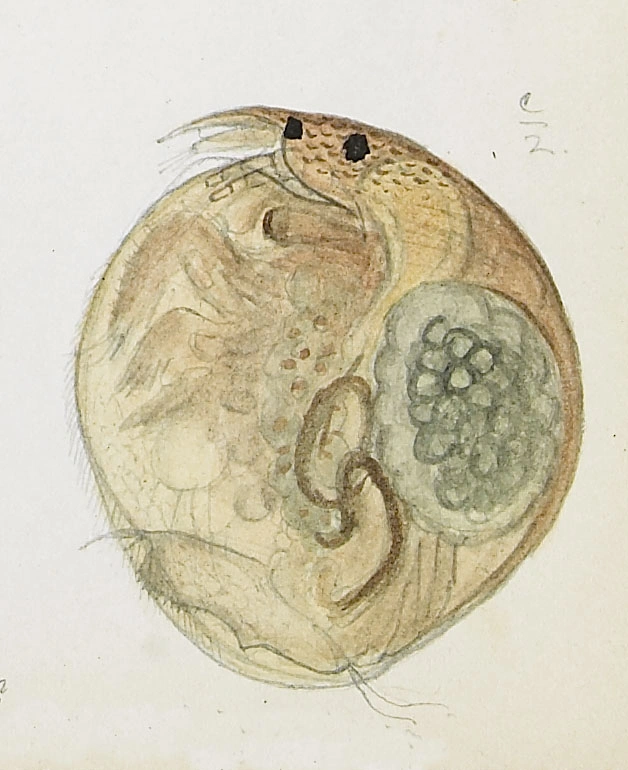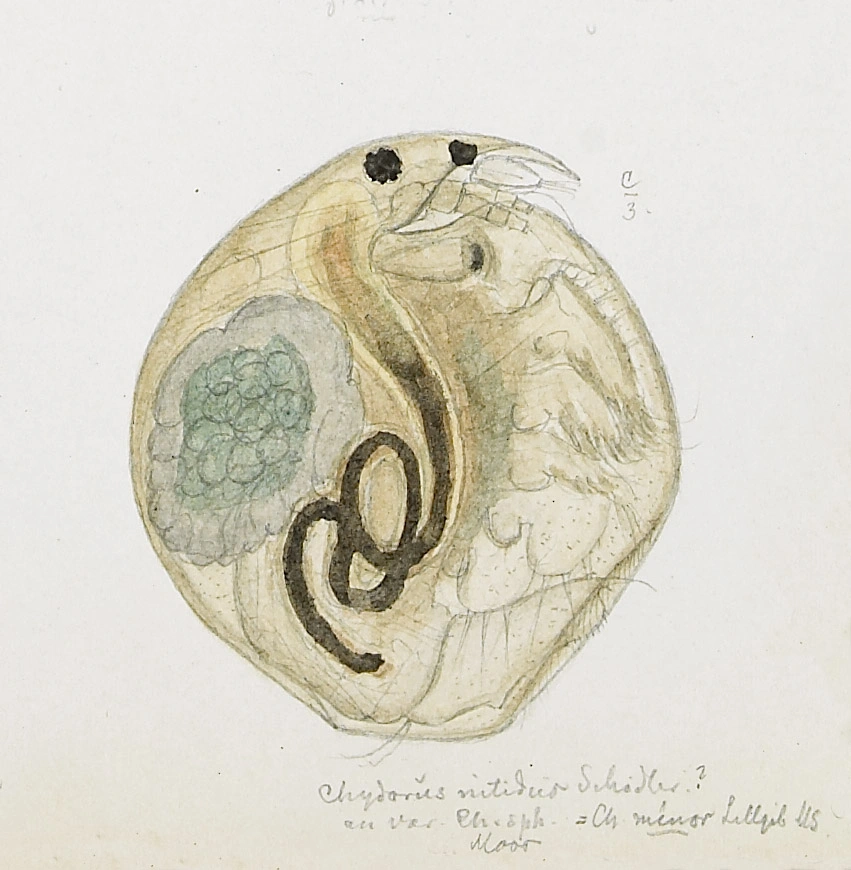Chydorus ovalis
Chydorus ovalis may have been mixed up with C. sphaericus and may therefore be more common than shown in «artskart». It is so far only found in South Norway. It is characterized by its rounded outline and most often found in small boggy waterbodies.
Key characteristics
Chydorus ovalis (female)
Chydorus ovalis can be mixed up with both C. latus and C. sphaericus, but differs from these species in having a more rounded outline. It is often larger than C. sphaericus. The antennae have eight bristles, which is more than in the two other Chydorus species. The postabdomen has 11–15 small denticles of about the same size. The shape of postabdomen makes it easy to distinguish the male from other species. Most often it has a deep yellowish-orange colour, but may also be more light yellowish-brown.
Female: Length 0.4–0.7 mm
Male: Length 0.3–0.5 mm
Ecology and distribution
C. ovalis is found in slightly more than 1 % of the localities. Since the species may be mixed up with both C. sphaericus and C. latus, it is probably underestimated so far. C. ovalis occur between 103 and 908 m a.s.l., and except for a few, all specimen are found in the area north of Oslo. It mainly occurs in peat land and 11 of the records are from water bodies characterized as bogs, being small (<0,1 ha) and acid.
| Vitenskapelig navn | < 4,5 | 4,5 - 4,9 | 5,0 - 5,4 | 5,5 - 5,9 | 6,0 - 6,4 | 6,5 - 7,0 | 7,0 - 7,4 | > 7,5 |
|---|---|---|---|---|---|---|---|---|
| 16 | 2,2 | 1,1 | 1,8 | 0,6 | 0,3 | 0,7 | 0 |
| Vitenskapelig navn | < 1,0 | 1,0 - 1,4 | 1,5 - 1,9 | 2,0 - 2,9 | 3,0 - 3,9 | 4,0 - 4,9 | 5,0 - 6,9 | 7,0 - 9,9 | > 10,0 |
|---|---|---|---|---|---|---|---|---|---|
| 0,7 | 1,1 | 0,4 | 2 | 2,6 | 3,1 | 4,1 | 1,9 | 0 |
| Vitenskapelig navn | < 0,01 | 0,01 - 0,09 | 0,1 - 0,9 | 1,0 - 9,9 | 10,0 - 99 | 100 - 999 | > 1000 |
|---|---|---|---|---|---|---|---|
| 7,8 | 5,5 | 1,3 | 0,8 | 0,5 | 0,3 | 0 |
| Vitenskapelig navn | < 100 | 100-299 | 300-499 | 500-699 | 700-999 | >1000 |
|---|---|---|---|---|---|---|
| 0 | 0,7 | 3,8 | 4,8 | 1 | 0 |
Look-alikes
Chydorus sp and Paralona pigra




